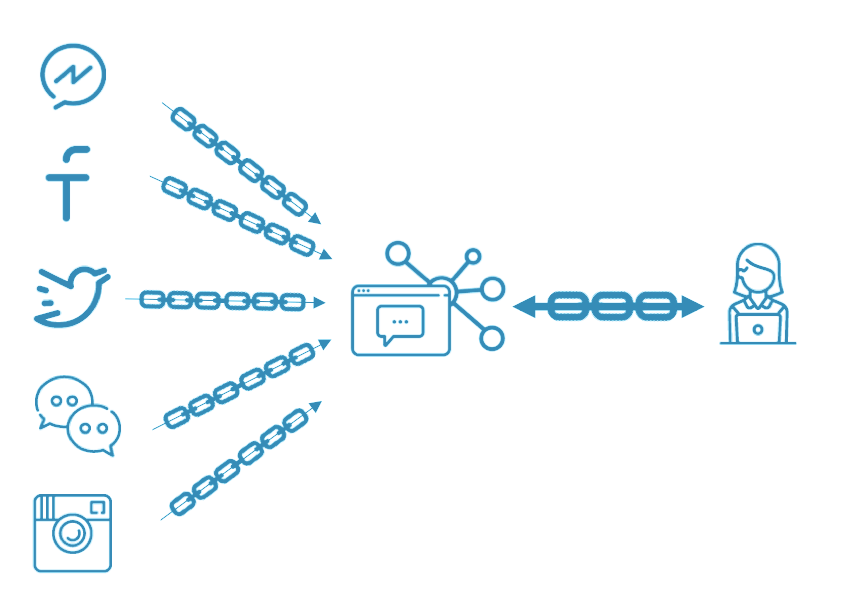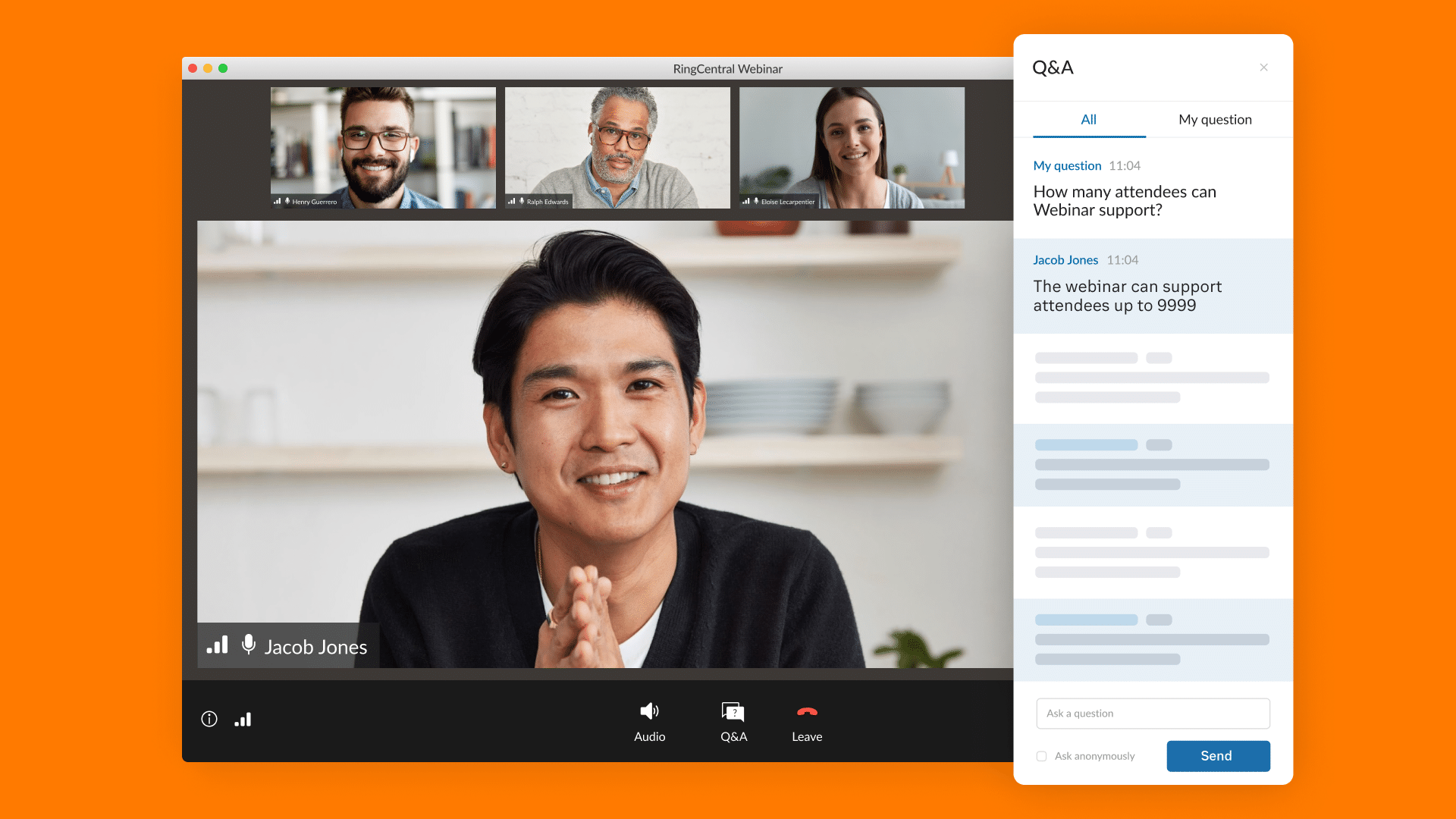Facebook platforms (Business pages, Messenger, and Instagram) innovative features and large user database offer great ways for companies to connect with their customers on their preferred channels. As they progressively become available to businesses and develop specific features for them, these platforms are now essential for customer care.
However, it can be risky to lean only on these third-party channels. To reduce these risks, companies should adopt an omni-digital strategy and develop a presence on multiple channels.
What are the risks of third-party platforms ?
Facebook has recently caused controversy because of the Cambridge Analytica case according to which it would have used for profit the data of 87 million users. The outrage this caused shows that the issue of data confidentiality is becoming one of users’ main concerns.
Facebook quickly reacted to address this issue and protect its users’ data. The company decided to modify its APIs to limit the data accessible to third-party apps. This limitation affects Messenger and Instagram platforms too, on which the APIs were completely restricted for some programmers. As a direct consequence, some companies stopped receiving any messages from these channels. Since then, Facebook has been working to better protect user privacy and is progressively reopening its app review process to third-party developers.
This type of situation shows the risks linked to using external platforms, on which companies are dependant but have no influence over. Diversifying the touch points between the company and its customers and turning to omni-digital strategies will limit these risks.
The importance of omni-digital for a more seamless customer experience
Embracing an omni-digital strategy means companies make themselves available on a variety of channels to adapt to the expectations of their customers : messaging, email, chat, social media, etc…
Customers now expect to be able to contact a company through channels they choose with no limitations. It is no longer important which means of communication is used, what becomes paramount is that the problem is solved. Companies need to be on the same channels their customers are and need to offer the same quality of service on every channel. This is still a challenge today since 65% of customers say they are frustrated by the inconsistency of service quality across channels.
Omni-digital also limits risks in case of interruption of the external channel since touch-points are multiplied. For example, if Messenger is no longer accessible, customers will naturally turn towards other channels to exchange with their friends and family : WhatsApp, text message, email. They mimic the same patterns for their customer care expectations.
If a platform decides to restrict APIs, customers will naturally use other ways of contacting the company. In this scenario, a company that uses only a few channels risks not being available to its customers whereas a company that aims for omni-digital will always be available on another channel. Proprietary channels : vital to tackle the instability Omni-digital highlights the importance of diversifying channels to adapt to customers’ new habits.
Proprietary channels need to be considered as an addition to external platforms : proprietary as in channels that are controlled by the company. In customer care, proprietary channels usually regroup a chat and a messaging system similar to Messenger, integrated within the brand’s app. There are several advantages to proprietary channels :
- Limit the risks of interruption: using third-party platforms is done through APIs that the company has no control over. On the other hand, proprietary channels are hosted on the brand’s app which limits such risks of losing access.
- Answer concerns regarding data privacy: the company has access to the entirety of the data and makes sure it is not exploited for marketing ends or resold which is not the case with third-party apps. In the context of the GDPR coming into effect in a few weeks and with the processing of data becoming a major concern for customers, you will be able to answer such concerns by endorsing proprietary channels.
- Controlling functionalities and user experience : third-party platforms develop new interfaces regularly, whereas the functionalities of a proprietary channel can be entirely personalised by the brand. With an in-app messaging system for example, customer identification makes it easier to access all their information at once and give them a more personalized interaction than through an external channel.
Wagering on proprietary channels as well as on third-party platforms leads to companies receiving requests from wildly different channels, that all need to be organized in a harmonized fashion.
The importance of streamlining management of digital channels
To be able to efficiently handle inquiries coming from such a variety of channels, centralizing their management becomes essential for companies. Whether the customer contacts the company via messaging, email, chat, or social media, agents should be able to process messages through a single interface.
To mitigate the impact of the activity coming from all channels at once it can be useful to lean on a digital customer interactions platform like Dimelo’s. Agents can then adapt easily to variations in the influx of messages between the different channels. If a channel is no longer accessible, agents will be ready to answer inquiries coming from another touch point. The company will this way be able to be responsive without needing to set up a new tool or train its agents again. A digital customer interactions platform also reinforces the reliability of third party channels. Their API service does not provide strong service-level commitment and are regularly updated, which can lead to reception issues. The SaaS model of a customer interactions platform allows to keep connectors up to date, to make sure messages from customers are received.

Companies leaning on a customer interaction management platform can easily integrate new channels. Agents answer from the same interface as the other channels and will not need to be trained for each separate channel. Business Chat, an Apple service that allows users to interact via iMessage with customers, is an example of a channel eagerly-awaited, that could be integrated in this way.
No channel is the right channel
Each channel comes with its pros and cons: external platforms have large users base but give you less control, while a proprietary channel gives you more control but requires to attract your customers on your own touch points. Companies must be aware of these limitations and that there is no perfect channel. Diversifying its presence on multiple channels allows to make the most of each channel specificities, while limiting risks. The recent restrictions on Facebook show that a company should never build its strategy on a single platform. By holding WhatsApp and Messenger as well, Facebook is an example of a GAFA having decisive part in customer care. Companies need to be present on these platforms to communicate with its billions users while bearing in mind their potential risks. To anticipate them, embracing an omni-digital strategy that integrates proprietary channels becomes essential. In the end, we shouldn’t speak about channels, but only how fast we can handle customer requests and issues.
Originally published Apr 27, 2018, updated Dec 30, 2022





